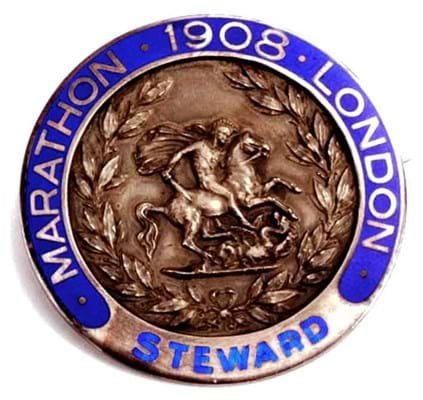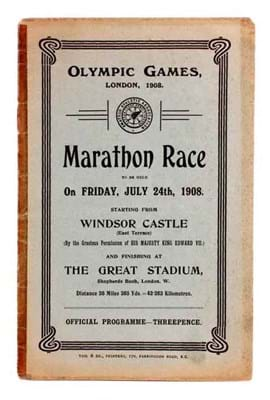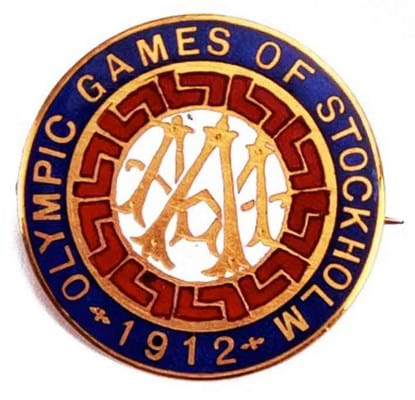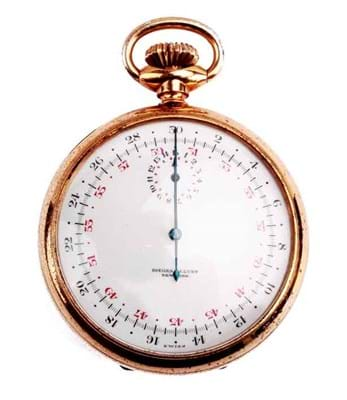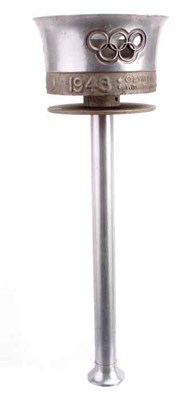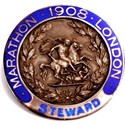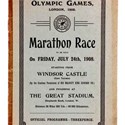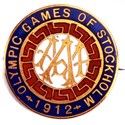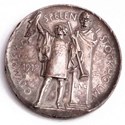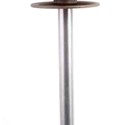But clearly there are vendors for whom 2012 still seems a long way away and perhaps others who believe that the glut of material produced by such 'anniversary' sales does not always make for the strongest prices.
Special Auction Services (15% buyer's premium) of Greenham Common, near Newbury were first out of the blocks with a fine selection of Olympic memorabilia in their sporting sale of September 1-2.
In chronological terms the offering began in Shepherds Bush. Although it was held just two years after an event in Athens (one that the International Olympic Committee has since downgraded), the London Olympics of 1908 have officially become the fourth Olympiad. In all, 22 nations participated.
Among the occasionally encountered souvenirs of the games are the silver-plated and blue enamel badges worn by stewards at the White City stadium. There were two in this sale and one was a rarity - a badge by Vaughton of Birmingham worn by an official on the marathon course. In addition to the inscription Marathon, 1908, London, Steward was a rendering of St George and the Dragon within a laurel surround.
The 1908 marathon was the first to cover the now accepted distance of 26 miles 385 yards. Initially planned as a 26 mile course, the distance was extended twice: first at the request of Princess Mary who asked that the race start beneath the windows of the Royal Nursery at Windsor Castle, and later by British officials who insisted the race finish in front of the Royal Box at the stadium. That the US flagbearer had cause a furore by refusing to lower the Stars and Stripes to Edward VII during the opening ceremony, only added to the need to restore the importance of the monarchy at the games.
The race itself provided some of the most enduring images of Olympic competition - the 5ft 2in Italian athlete Dorando Pietri entered the stadium in the lead but was so exhausted he collapsed several times and ran the wrong way around the track. Not far from the finish, two officials took the disorientated athlete by the arms and brought him to the line.
Following a complaint by the American team, Pietri was disqualified (the gold medal was given instead to Johnny Hayes of the Irish American Athletic Club), but the images of his suffering would make him an international celebrity and (upon the suggestion of writer Arthur Conan Doyle) earn him a silver-gilt cup presented by Queen Alexandra.
A programme titled Marathon Race, Friday 24 July 1908, starting at Windsor Castle & finishing at The Great Stadium, Shepherds Bush,sold at £480. The marathon steward's badge quadrupled hopes at £4200.
General stewards' badges from the Shepherds Bush games are more common visitors to specialist sales, but always desirable as they were made in relatively small quantities. The example here, cast with the helmeted head of Athena and a laurel branch (the medals of the British Olympic Council share the same design) sold at £1900.
Stockholm Olympics
The Stockholm games of 1912 were represented by a silver medal won by Harold R. Humby of Great Britain in the Team Clay Pigeon Shooting event. The front of the medal shows a statue of Ling, founder of Swedish gymnastics, and to the reverse a victorious athlete being crowned by two seated females. Estimated at £1200-1600, it made £1500.
A more enigmatic souvenir of the Stockholm Olympics was a gold and blue enamel badge worked with the logo of the Amateur Athletic Association and surrounded by the legend Olympic Games of Stockholm, 1912.It may have been a GB competitor's badge. Estimated at £60-80, it sold for £1700.
Berlin Olympics
A rarity from the controversial Berlin games of 1936 was a gold-plated and white enamel Olympic Order, First Class worked with a design combining the Olympic rings with Nazi insignia. It was a metaphor for what the games became. Complete with its original red and white striped ribbon and the white leather case of issue with Olympic Rings decoration, it sold at £1000.
The 1500m gold medallist in 1936 was Jack Lovelock (1910-49). Remembered as being among the greatest of all New Zealand sportsmen, he was the first middle distance runner to specialise in the 'kick', the sudden turn of pace in the final sprint home which proved key to his victory over Glen Cunningham of the USA.
He died tragically, falling under a subway train in Brooklyn eight days before his 40th birthday.
Included in this sale was a rolled gold stopwatch with back panel inscribed Princeton University Athletic Association Second Annual Invitation Track Meet, Palmer Stadium, June 15 1935, One Mile run won by J.E. Lovelock, 4.11s.
At the time, the race was known as the 'Mile of the Century'. It would appear that this watch was given by Lovelock to the New Zealand physician, military surgeon and statesman Arthur Porritt (1900-1994).
An athlete himself, Porritt represented New Zealand at the 1924 Summer Olympics in Paris, winning a bronze medal in the famed Chariots of Fire race won by Harold Abrahams. Estimated at £5000-6000, the watch sold for £4800.
An imperfect parallel is provided by the stopwatch that timed the first four-minute mile (Roger Bannister's famous run in 1954) that sold for £97,250 as part of the Jeffrey Archer collection at Christie's in June.
Olympic Torches
One of the lasting novelties of the Berlin games was the spectacle of the torch relay - repeated in the post-War London games of 1948.
It was no 70-day extravaganza and it involved nothing like the 8000 torchbearers who will carry the Olympic flame around the UK in 2012, but as only the second torch relay of the modern Olympic Games, it was greeted with wild enthusiasm.
The torchbearer was frequently mobbed, even when he (and they were all 'hes') ran by in the dead of night.
About 1700 aluminium torches running on solid fuel tablets were made for use across Europe and England. In keeping with the penny-pinching philosophy of the 'Austerity Games', their designer Ralph Lavers was tasked to create something "inexpensive and easy to make but still of pleasing appearance and a good example of British craftsmanship".
They come up for sale occasionally (sales of Olympic memorabilia are relatively common on the continent) and the double-estimate £5000 achieved here was par for the course.


